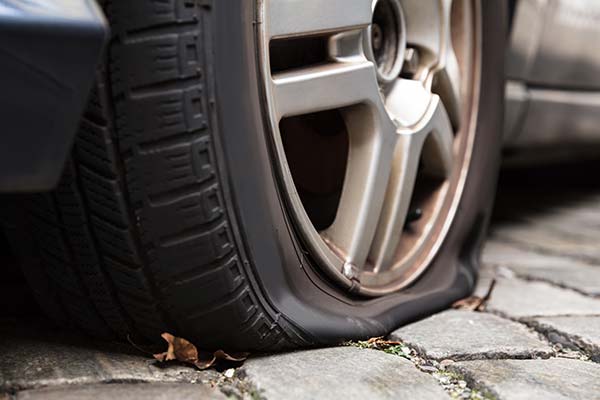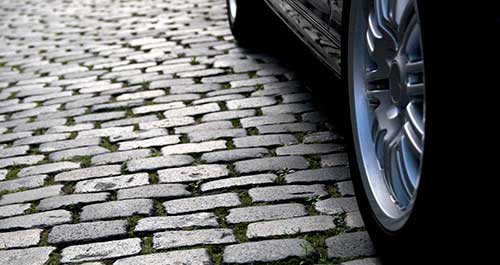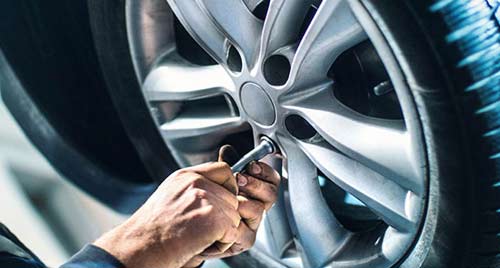It’s a proven fact that potholes can damage your car – even if you react in time to partially avoid them. And, while some damage is immediately visible, it might take you a while to notice that your car isn’t handling as well as it used to.
In general, there are two factors that directly impact the type and the severity of the damage caused by potholes to your car:
- The speed that you hit the pothole;
- The depth of the pothole.
So, what type of damage can potholes actually cause? What should you do if you hit a pothole?
What damage can potholes cause?
Tyres
When it comes to potholes, your tyres are the most vulnerable part of your car. Common problems from potholes include sidewall bulges, tread separation or a puncture. You might also experience uneven wear on your tyres as a result of their alignment being knocked out of position by the pothole, or damage to your rims due to a large or deep pothole.
How does a pothole cause this damage?
A sidewall bulge happens when your tyre hits a pothole and the impact separates the (normally) airtight liner of the tyre from the tyre sidewall, allowing air to seep into the carcass (or body) of the tyre. This causes a bubble in the sidewall which could blow out at any moment. Similarly, tread separation occurs when the tyre is compressed against the wheel when you hit the hard edge of the pothole, slicing the rubber. And, as the rims on most modern cars are aluminium, they are easily dented if you drive into a deep pothole.
What should you do if you notice damage to your tyres?
If you notice uneven wear on your tyres, it’s best to keep an eye on the situation. However, if you notice any other damage to your tyres, it’s recommended to get your tyres changed as soon as you can.
If your rims are dented, try and replace them sooner rather than later. A dented rim results in a poor seal between the rim and the tyre, which can lead to air leaks and flat tyres.
How can you prevent pothole damage to your tyres?
Apart from avoiding potholes completely, the easiest way to help prevent damage from potholes is to make sure your tyres are correctly inflated.
Wheels
Your wheels are also vulnerable to damage from potholes. Potholes can cause bends, chips and cracks in your wheel, which will prevent your wheel from forming an airtight seal with the tyre. Additionally, a bent wheel won’t roll smoothly. It is worth mentioning that chips in your wheel are not always easy to spot, as they can be very small, located in one of the spokes or covered in brake dust and road grime.
Another potential wheel problem concerns wheel alignment. Hitting the hard edge of a pothole can jar your steering system, causing misalignment to your wheels. You might only notice this damage when your car pulls to one side or another or the steering isn’t as responsive as it used to be.
What should you do if you notice damage to your wheels?
Cracked or chipped wheels have the potential to be a major issue, so it’s best to completely replace them. Bent wheels can sometimes be repaired. If you suspect your wheels are misaligned, for safety reasons it is important to get them checked and corrected quickly.
Steering and suspension
Your suspension smooths the bumps in the road, so you don’t feel them. However, a sudden impact with a pothole can give your suspension a knock, causing a variety of problems. Signs that there is a problem with your suspension include: your car pulling in one direction; the handling feeling loose; uneven tyre wear; or unusual vibrations and sounds.
How does a pothole cause this damage?
Potholes cause damage when the initial force of hitting the pothole travels through your tyres into the components of your steering and suspension system (i.e. shock absorbers, springs, tie rod ends, control arms, etc.). Repeated jolts from potholes can accelerate the rate of wear and tear on your steering and suspension system.
What should you do if you notice damage to your steering and suspension?
Most steering and suspension problems can be fixed by replacing the worn or damaged part. As damage to your steering and suspension systems can put your safety at risk, it is recommended to get this looked at quickly.
Undercarriage, body and exhaust
Cars with a low ride height have better handling, but are also more likely to be damaged by potholes. Cosmetic damage from potholes includes scrapes on low-hanging bumpers or side skirts. More serious damage includes scrapes along your undercarriage that cause rust and leaks or holes being ripped in your exhaust pipes, muffler or catalytic converter. If you do damage your exhaust pipes, there will be a lot of noise and possibly a loss of power. There’s also a good chance your exhaust will start to expel harmful pollution, including possibly leaking exhaust fumes into the cabin, which is potentially serious for your health.
What should you do if you notice damage to your undercarriage, body and exhaust?
If you notice a problem with your exhaust, it is recommended to get it fixed straightaway due to the environmental and health risks. Leaks from your undercarriage should also be investigated and repaired. However, there is no rush to repair cosmetic damage done to bumpers and side skirts.
The content contained in this article is for entertainment and informational purposes only and should not be used in lieu of seeking professional advice from a certified technician or mechanic. We encourage you to consult with a certified technician or mechanic if you have specific questions or concerns relating to any of the topics covered herein. Under no circumstances will we be liable for any loss or damage caused by your reliance on any content.




